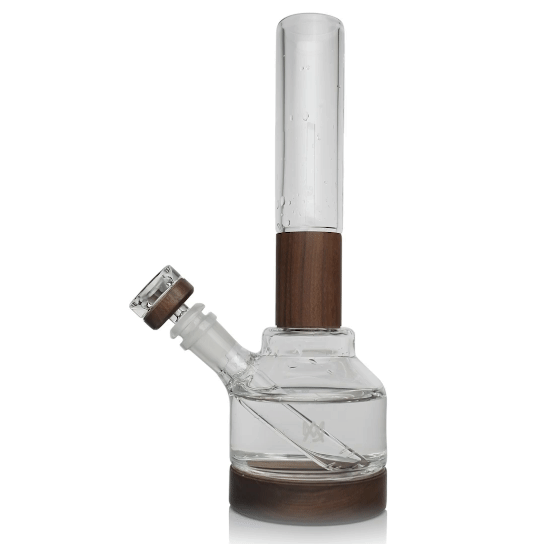Understanding the Intoxicating and Poisonous Effects of Mad Honey: What Does Mad Honey Do to You?

Ever heard of honey that can get you high or make you sick? Mad honey is not your typical jar of sweetness. Some people use it for its hallucinogenic effects, while others may unknowingly face serious health risks after consuming it.
This unique substance leaves many wondering: what does mad honey do to you?
Mad honey comes from bees collecting nectar and pollen from rhododendron plants, which produce a natural toxin called grayanotoxin. While it has been used traditionally for medicinal purposes, its intoxicating and poisonous effects raise many questions about safety and proper use.
This blog will uncover how mad honey affects the body, signs of poisoning to watch for, and ways to consume it responsibly—if at all. Keep reading; this could save a trip to the ER!
What is Mad Honey?
Mad honey comes from bees that collect nectar from specific rhododendron flowers. This unique honey contains natural toxins that impact the human body in unusual ways.
Source and production of mad honey
Himalayan giant honeybees, also known as _Apis laboriosa_, create mad honey from rhododendron nectar. These bees thrive in high-altitude regions of Nepal and Turkey, where certain Rhododendron species dominate.
The flowers of these plants produce nectar rich in grayanotoxins, a compound responsible for the intoxicating and poisonous effects of this "toxic honey." In spring, increased grayanotoxin levels make the production particularly potent during this season.
The process begins with bees collecting pollen and nectar from Rhododendrons. They then store it in their combs to ferment into honey over time. Harvesting often requires skillful climbing at dangerous heights in mountainous areas like the Himalayas.
This unique environment directly impacts both the potency and availability of mad honey globally. Understanding its chemical makeup reveals more about its intoxicating effects.
Grayanotoxins: The key toxic component
Grayanotoxins are the primary toxic compounds in mad honey, derived from Rhododendron plants. These toxins disrupt sodium ion channels in cell membranes, prolonging their activation and altering normal nerve and muscle function.
Muscarinic receptors also become overstimulated, causing symptoms like dizziness or low blood pressure.
Among these toxins, Grayanotoxin I is the most potent. It can trigger severe reactions even at small doses. Grayanotoxin III has been linked to arrhythmias due to its effects on cardiac Purkinje fibers by creating oscillatory after-potentials that disturb heart rhythms.
Intoxicating Effects of Mad Honey
Mad honey can affect the mind and body through its natural neurotoxins. Consuming it in small amounts may induce unusual sensory experiences and altered perceptions.
Hallucinogenic experiences
Consuming mad honey can trigger vivid hallucinogenic experiences. The grayanotoxins it contains alter brain function, creating mind-altering effects. Some users report feeling euphoria, heightened senses, or even seeing distorted visuals.
Historically, people sought out this poisonous honey for its psychoactive substances to reach a trance-like state.
Hallucinations caused by mad honey occur due to its impact on the nervous system. Symptoms like delirium may appear shortly after ingestion. In some cases, these effects resemble those of other psychotropic substances but often come with risks like seizures and convulsions.
"Mad honey has fascinated cultures for centuries," experts note about its unusual interplay between intoxication and toxicity.
Impact on the nervous system
Grayanotoxins in mad honey disrupt sodium ion channels in the nervous system. This interference leads to symptoms like dizziness and progressive muscular weakness.
These neurotoxins impair central nervous system function, causing nervous system toxicity. Overconsumption risks severe nervous system complications, including prolonged neurological disorders or damage.
Poisonous Effects of Mad Honey
Consuming mad honey can quickly lead to harmful reactions due to its toxic compounds. These effects may pose significant health risks if not addressed promptly.
Symptoms of poisoning
Mad honey poisoning can hit within minutes to a few hours after eating it. Effects vary based on the amount consumed and a person’s sensitivity.
- Dizziness often occurs as an initial sign, making balance difficult.
- Nausea or vomiting may follow shortly, resulting from toxic chemicals in the honey.
- Sweating can increase unusually, even if the environment isn’t warm.
- Low blood pressure might develop, leading to fainting or lightheadedness.
- Slow heart rate is common and may cause weakness or confusion.
- Chest pain could appear as the cardiovascular system struggles with toxins.
- Blurred vision might happen due to impaired neurological functions.
- Hallucinations often surprise users unfamiliar with mad honey's effects on perception.
- Muscle weakness makes basic tasks harder during severe symptoms.
- Severe poisoning cases include seizures, which need emergency help quickly.
Carefully checking doses reduces risks from these harmful effects of mad honey consumption!
Potential risks and complications
Toxic effects of mad honey can lead to dangerous cardiovascular problems. Bradycardia occurs in 90% of cases, causing a slow heart rate that reduces blood flow. Hypotension often follows, dropping blood pressure to alarming levels and mimicking acute coronary syndrome.
These adverse cardiac events require immediate medical attention.
More severe complications may involve an AV block, disrupting the electrical signals between the heart's chambers. Untreated poisoning risks worsening symptoms like chest pain, nausea, vomiting, or dizziness.
Toxicity risks increase with higher doses and may result in long-term negative health outcomes if not addressed quickly.
Traditional and Modern Uses of Mad Honey
People have used mad honey for its unique effects and medicinal properties for centuries. Today, it continues to attract attention for both recreational and traditional purposes.
Medicinal applications
Mad honey demonstrates strong medicinal properties. Its anti-inflammatory effects help reduce swelling, making it valuable for conditions like arthritis. The honey’s antioxidant traits fight oxidative stress, supporting overall cellular health.
Antimicrobial features combat infections, while its antidiabetic characteristics may aid in regulating blood sugar levels.
Historically, many used mad honey to treat hypertension due to its potential impact on blood pressure regulation. This natural remedy also plays a role in herbal medicine for various ailments.
Its therapeutic uses stem from the unique grayanotoxins found in the substance, offering healing benefits with proper and safe consumption practices.
Recreational use and cultural significance
Traditional honey harvesting communities like the Gurung and Kulung in Nepal risk their lives collecting mad honey. They climb steep cliffs using unsafe methods to gather this intoxicating substance.
These practices are deeply tied to cultural traditions passed down for generations.
Middle-aged men, especially those between 40 and 60 years old, often use mad honey recreationally for its aphrodisiac properties. In some cultures, people view it as a natural way to enhance experiences or as an alternative to modern substances.
Its role transcends simple consumption, embedding itself into rituals and lifestyles across regions where it is sourced.
Diagnosis and Prognosis of Mad Honey Poisoning
Doctors can identify mad honey poisoning through distinct symptoms like low heart rate and nausea. Early diagnosis improves recovery chances, reducing long-term risks.
Identifying symptoms
Identifying symptoms of mad honey poisoning is crucial for cannabis users interested in consuming this substance. Early recognition helps prevent complications and ensures timely treatment.
- Bradycardia, or slow heart rate, often stands out as a clear symptom. It may cause fatigue or weakness.
- Hypotension signs include low blood pressure, leaving consumers feeling lightheaded or faint.
- Dizziness indicators are common and may impair balance and focus.
- Chest discomfort could feel like tightness or pressure, which requires immediate attention.
- Cardiovascular symptoms might also include irregular heart rhythms detectable on an ECG.
- ST changes on ECG, though alarming at first, typically prove to be reversible with proper care.
- Nausea and vomiting serve as other warning signs of toxicity in many cases.
- Blurred vision frequently accompanies more severe instances of poisoning.
- Severe symptoms may escalate to confusion or loss of consciousness without prompt intervention.
- Immediate medical evaluation is necessary if these signs appear following consumption of mad honey.
Long-term health implications
Symptoms of mad honey poisoning can cause lasting effects if left untreated. Chronic exposure to grayanotoxins may lead to cardiac complications, including heart rhythm irregularities.
Repeated toxin exposure also increases the risk of seizures over time. Though fatalities are rare, long-term issues like neurological effects and chronic intoxication remain concerns.
Prolonged consumption may strain the kidneys and liver, potentially causing dysfunction in these organs. Patients with frequent exposures could face delayed recovery or secondary health problems from organ stress.
Proper symptom management is essential for reducing risks tied to repeated poisoning incidents.
Treatment for Mad Honey Poisoning
Doctors focus on stabilizing the patient and addressing symptoms quickly. Early treatment reduces risks from this toxic honey’s effects.
Immediate care and detoxification
Saline administration helps maintain hydration and flush out toxins during acute intoxication from mad honey. This step is crucial to stabilize the individual and support initial detoxification efforts.
For severe cases, medical professionals use atropine sulfate (0.5–2 mg) to counteract symptoms caused by toxic substance exposure. Prompt poison control measures can reduce complications and improve recovery outcomes significantly.
Medical interventions
Doctors use temporary pacemakers to treat AV block caused by grayanotoxin poisoning. This device helps regulate the heart's rhythm until the toxin clears from the system.
Symptoms often resolve within 24 hours due to rapid metabolism and excretion of grayanotoxins. Pharmacological interventions, like atropine, may address bradycardia or other cardiac complications if severe.
Navigating the Risks of Mad Honey
Understanding the risks of mad honey requires careful attention to its sources and effects. Consumers must approach it with awareness to avoid potential health dangers.
Safe consumption practices
Mad honey can have intoxicating and poisonous effects if consumed recklessly. Recognizing its risks and following safe practices can help avoid health hazards.
- Identify mad honey by its dark reddish color and bitterness before consuming any amount.
- Avoid consuming more than a teaspoon to minimize the risk of poisoning or severe reactions.
- Check for seasonal and geographical factors, as toxicity varies depending on the plants bees visit during production.
- Purchase mad honey only from trusted sources to ensure its purity and reduce hidden dangers.
- Take into account any personal health conditions before trying mad honey, especially heart or nervous system issues.
- Learn about the symptoms of mad honey poisoning, such as low blood pressure or dizziness, to act quickly if needed.
Understanding its effects is crucial before exploring its traditional and modern uses.
Legal and ethical considerations
South Korea banned mad honey in 2005 after a consumer died, highlighting its health risks. This prompted stricter regulations to protect individuals from toxic honey consumption. Grayanotoxin's effects on the body pushed policymakers to address safety concerns associated with unregulated sales.
Historically, the Black Sea region exported up to 25 tons of mad honey annually to Europe in the 18th century. Today, exporting regions face legal scrutiny due to potential poisoning cases and limited medicinal benefits.
Stricter export rules aim to ensure consumer safety while preventing misuse or illegal trade practices.
Conclusion
Mad honey is fascinating yet risky. Its intoxicating and poisonous effects come from grayanotoxins, which can impact the body in unpredictable ways. While it holds cultural and medicinal value, consuming it comes with serious health risks.
Educating oneself before experimenting is essential to avoid harm. Proceeding with caution ensures a safer experience.
FAQs
1. What is mad honey, and why is it intoxicating?
Mad honey is a type of honey made from nectar containing grayanotoxins, which are toxic chemicals found in certain rhododendron plants. These toxins can cause intoxicating effects when consumed.
2. How does mad honey affect the body?
Mad honey can cause dizziness, nausea, vomiting, low blood pressure, and even hallucinations. In high doses, it may lead to serious health problems like irregular heartbeats or fainting.
3. Is consuming mad honey always poisonous?
Small amounts of mad honey might only produce mild intoxication or euphoria for some people. However, larger quantities increase the risk of poisoning and harmful side effects.
4. Can you safely use mad honey for health benefits?
Some claim that small amounts help with issues like pain relief or improving sexual performance. However, its risks outweigh potential benefits if not carefully monitored by an expert familiar with its dangers.






![Vessel Helix Pipe [Copper] - Headshop.com](http://www.headshop.com/cdn/shop/files/ad3c0443-b76d-4fe5-84b8-a617dd50a950.jpg?v=1747419387&width=900)
![Vessel Helix Pipe [Copper] - Headshop.com](http://www.headshop.com/cdn/shop/files/7b0e06e3-9106-4684-80e4-408362c34085.jpg?v=1747419388&width=1000)
![Vessel Wood Vape Pen Battery [White/Beechwood] + - Headshop.com](http://www.headshop.com/cdn/shop/files/4ecd5d0f-363a-454e-a7a0-229fb93bf456.jpg?v=1725470645&width=900)
![Vessel Wood Vape Pen Battery [White/Beechwood] + - Headshop.com](http://www.headshop.com/cdn/shop/files/d232e493-09e6-4574-b44c-3e2bde9425b4.jpg?v=1725470647&width=1000)


![Vessel Compass Apex Charger [Black] - Headshop.com](http://www.headshop.com/cdn/shop/files/f10e6bf4-6ce7-4a59-a50e-a4184f069754.jpg?v=1729115238&width=900)
![Vessel Compass Apex Charger [Black] - Headshop.com](http://www.headshop.com/cdn/shop/files/dce98c70-346c-405f-aca8-d59c7feed96d.jpg?v=1729115240&width=1000)

![Vessel Helix Pipe [Black] - Headshop.com](http://www.headshop.com/cdn/shop/files/Pipe_Black_Angle.jpg?v=1744306153&width=900)
![Vessel Helix Pipe [Black] - Headshop.com](http://www.headshop.com/cdn/shop/files/Pipe_Black_Closed.jpg?v=1744306155&width=1000)
![Vessel Compass Rise Vape Bar [Crimson] - Headshop.com](http://www.headshop.com/cdn/shop/files/fc3fd52a-2783-4fac-bd38-bc4f2013a889_5466b32d-da71-427f-8737-bf7d7f5f2c77.jpg?v=1735253136&width=900)
![Vessel Compass Rise Vape Bar [Crimson] - Headshop.com](http://www.headshop.com/cdn/shop/files/66947a99-195c-4deb-b29e-03443ebebd5a_32c35e3d-ba1b-4d4d-a879-3886d37bddf7.jpg?v=1735253136&width=1000)










![Pipe by Vessel [Gunmetal]](https://cdn.shopify.com/s/files/1/0585/8462/9443/files/Pipe_Gunmetal_Angle_500x500.jpg?v=1744306453)













